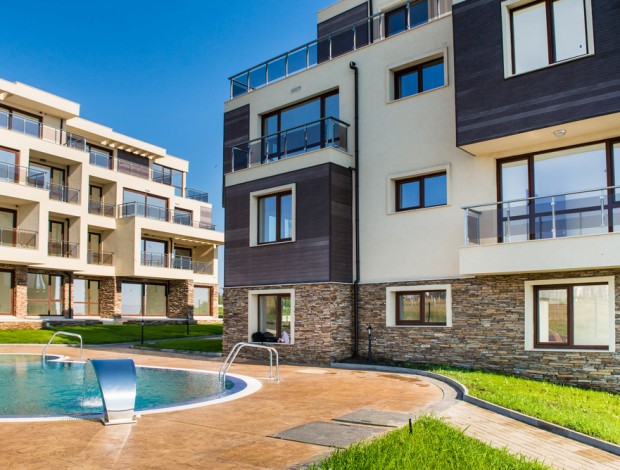Small and big condo projects: pros and cons

You start shopping around for your first brand new condo and you realize that condominiums come in all shapes and sizes! Ranging from two-unit buildings (like a duplex) to a-thousand-unit ones, there are all kinds of options on the market.
Confusion assails you. What are the differences between the different types of condos? What does the life in a condominium located in a tall tower look like versus the one in a smaller building?
Financial Matters
Right from the bat, it is interesting to notice that buildings of less than four units are not subject to certain rules, notably those regarding facade inspection and parking garage, reminds us Élise Beauchesne, senior partner at Solutioncondo.com. The condominium fees are therefore reduced.
Smaller buildings generally require less equipment and installations such as elevators, generators, etc., and that usually reduces the condominium fees as well. The financial aspect cannot be overlooked.
In the same mindset, there is also a contingency fund that is used to cover the costs of long term renovations and repairs. Quebec's Code of Civil Law stipulates that co-owners need to contribute to the fund to a minimum of 5% of the shared expenses. Therefore, the bigger the building is, the bigger the fees are.
It is not necessary to have concerns about the difference of fees though. "In a small building, construction works are usually on a smaller scale, but shared among a smaller number of people, while in a big buildings, construction works are quite expensive, but are assumed by a greater number of persons", explains Élise Beauchesne.The financial impact on everyone ends up being pretty much the same. It is important to be careful if the contingency fees are too low: in case of major construction works, a special contribution will most likely be required.
A better communication?
"Some people prefer to avoid big housing complexes that usually have more rules", explains Élise Beauchesne. Indeed, the more people live in the same area, the more rules are required to maintain harmony and to ensure everybody’s well-being.
Marion Daréous has lived for 5 years in a condo located in a three-unit building before she moved as she was expecting her second child. "We loved it! The main perk of a small condominium is the friendlier management. When there are just 3 of us to agree, it makes everything easier", she underlines.
Élise Beauchesne agrees, but wants to put things into perspective. If in theory small condominiums make decision-making easier, it takes only one recalcitrant to create conflict. A majority is easier to break in a smaller group and certain behaviours that would be unnoticed in a big building can be irritating in a small one. For example, a neighbour that has a coloured flag on his balcony is way more visible in a small condominium, which can create frictions, requests to come up with new rules, etc. André Delage, president of the Regroupement des gestionnaires et copropriétaires du Québec, adds: "A condominium is like a miniature society. Communication is often easier in smaller groups, as long as courteous relations are maintained."
Some facts to consider
You hesitate on what type of condo to look for? Here are a few tips to help you find out:
-
Are recreation facilities (gym, pool, communal area) important to me?
-
If so, can I afford them?
-
Is soundproofing important to me? Please note that smaller condominiums are often made of brick on the outside and of wood on the inside. Bigger buildings are usually made of concrete that is a much better soundproofing material especially for flooring. Be careful of ads such as: "Superior soundproofing". Ask what it really means.
-
You can also ask to read a verbatim to get a better understanding of the dynamic during board meetings.
-
Ask to read the declaration of co-ownership to get a better understanding of the building rules.
To decide what type of building is the best for you, it is necessary to determine certain things first, reminds us André Delage. Beyond the size of the building, it is important to be comfortable in the neighbourhood. It means that is is important to take your time to take the pulse of the surroundings inside the condominium and also outside in the neighbourhood.
Good luck!

Stock images: Shutterstock
Related articles
Most popular articles